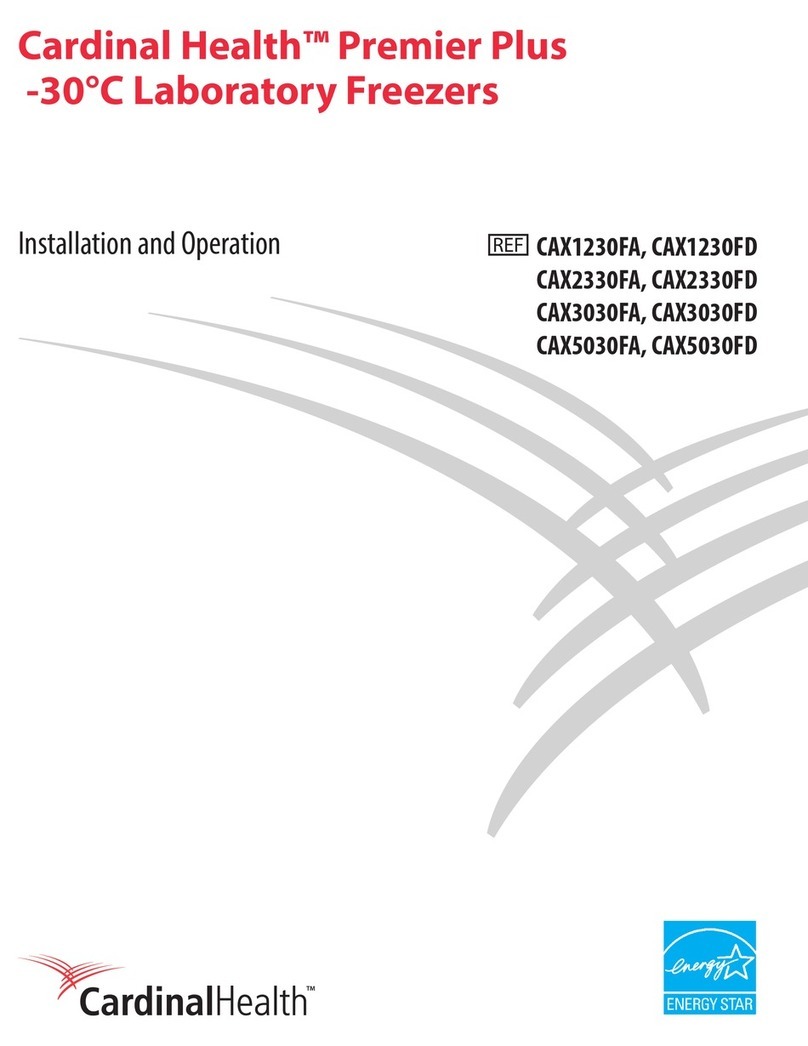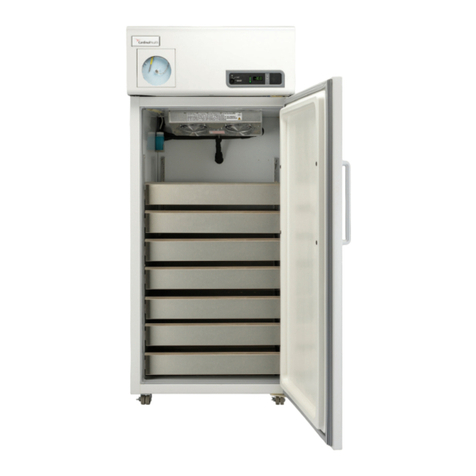
2
Table of Contents
Safety Information........................................................................................................................................................ 3
Alert Signals ................................................................................................................................................................. 3
Intended Use Statement .............................................................................................................................................. 4
Explosion-Proof Refrigerators and Freezers................................................................................................................ 5
Overview ...................................................................................................................................................................... 5
MODEL 20EREECAA .................................................................................................................................................. 6
MODEL 20EFEECAA................................................................................................................................................... 6
Flammable Materials Storage Refrigerators and Freezers.......................................................................................... 7
Overview ...................................................................................................................................................................... 7
MODEL 20FREECAA ................................................................................................................................................ ..8
MODEL 20FFEECAA................................................................................................................................................. ..8
General-Purpose Laboratory Refrigerators/Freezers ................................................................................................ ..9
Overview ......................................................................................................................................................................9
MODEL 20LREECAA................................................................................................................................................. 10
MODEL 20LFEECAA................................................................................................................................................. 10
MODEL 17LREECAA................................................................................................................................................. 11
MODEL 18LCEECAA................................................................................................................................................. 11
Unpacking and Installation.........................................................................................................................................12
Shipping Carton .........................................................................................................................................................12
Unpacking .................................................................................................................................................................. 12
Location...................................................................................................................................................................... 12
Clearance...................................................................................................................................................................12
Installation..................................................................................................................................................................14
Electrical.....................................................................................................................................................................14
Be Advised.................................................................................................................................................................14
How to Seal Killark® Box Conduit with Fiber and Sealing Compound to Help Protect Against Explosions
(Explosion-Proof Units Only):.....................................................................................................................................15
Operation ...................................................................................................................................................................18
Environmental Operating Conditions .........................................................................................................................18
Start-Up Procedure ....................................................................................................................................................18
Restart Procedure......................................................................................................................................................18
How to Save Energy ..................................................................................................................................................24
Safety Tips .................................................................................................................................................................24
Material Compatibility.................................................................................................................................................25
Troubleshooting .........................................................................................................................................................26
Maintenance...............................................................................................................................................................27
Cleaning of Units........................................................................................................................................................27
Interior/Exterior and Door Gaskets ............................................................................................................................27
Condenser..................................................................................................................................................................27
Manual Defrost Procedure .........................................................................................................................................28
Replacement Parts..................................................................................................................................................... 29
Ordering Procedures..................................................................................................................................................30
13 Month Limited Warranty........................................................................................................................................ 31
WEEE Compliance............. ........................................................................................................................................32






























